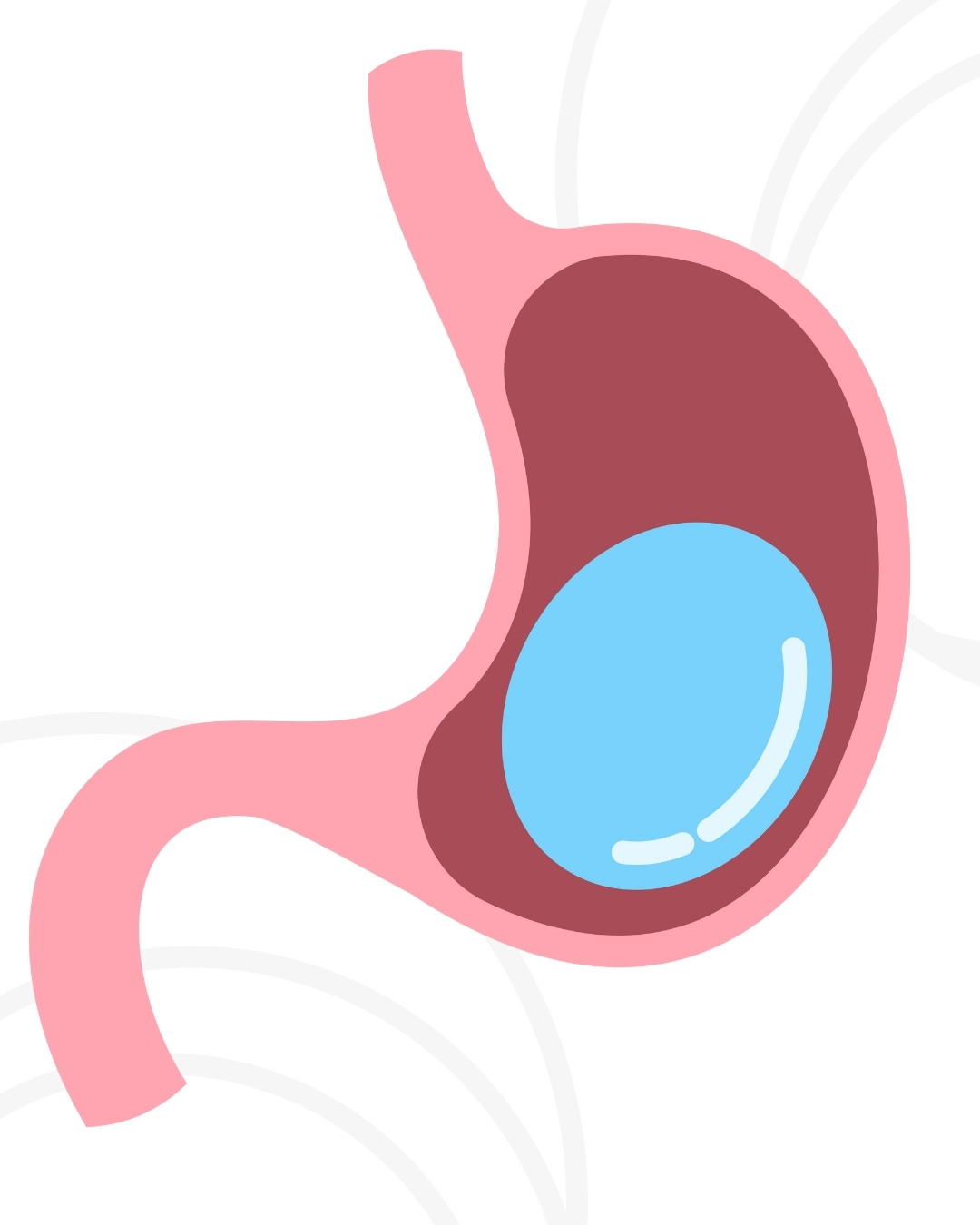
How does a gastric ballon procedure make you lose weight?
INTRAGASTRIC
BALLOON PROCEDURE
Intragastric Balloon
The Intragastric Balloon is a weight-loss system that uses a gastric balloon that occupies space in the stomach, that aims to reduce feelings of hunger and help you feel fuller for longer after eating only small meals
Technique and Function
The balloon is introduced into the stomach through the mouth without the need for surgery while the patient is under mild sedation. The balloon partially fills the stomach and limits food intake. Patients report that they have an enduring feeling of satiety.
Intragastric Balloon Procedure
The unfilled gastric balloon is inserted into the stomach through the mouth and oesophagus with the aid of an endoscopic camerawhile the patient is under mild sedation.
Once inside the stomach, it is then filled with a sterile saline solution, so that it expands into a spherical shape. The balloon can be filled with different amounts of saline (from 400 to 700 cc) to best match the patient’s body structure.
This procedure is performed by a qualified specialist gastroenterologist alongside an anaesthetist and trained nursing staff.
Placement of the balloon takes approximately 20 minutes, patients are monitored by nursing staff in the recovery area, and are generally discharged within two hours after balloon insertion.
The Intragastric Balloon is temporary and should be removed after 6 months.
is the intragastric balloon suitable for?
The intragastric balloon is designed to assist with weight loss in people who ideally have 10 to 30 kilograms of weight to lose. The minimum BMI is for individuals with a BMI of 27 and greater.
It is intended to be used while a patient participates in a diet and exercise plan supervised by a health care provider.
It is also used for people who are not suitable for other forms of weight loss surgery, may assist in reducing weight prior to surgery, therefore reducing the risks associated with surgical procedures on overweight patients.
Advantages
- The patient feels satiety.
- The patient appreciates the advantages of a non-surgical and non-pharmacological approach.
Disadvantages
- The procedure is only for 6 months.
- Some patient do not tolerate restrictive procedures.
- Nausea and vomiting, especially in the beginning.
- Strict diet and exercise programme.
Start changing your life NOW!
Reach out to our weight-loss surgery experts today!
